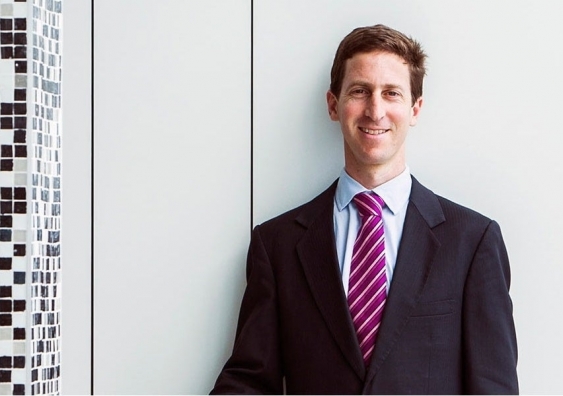How better leadership in hospitals can improve patient outcomes
New research has found an improved approach to leadership coordination and communication in hospitals can improve patient outcomes.
New research has found an improved approach to leadership coordination and communication in hospitals can improve patient outcomes.

Victoria Ticha
+61 2 9065 1744
v.ticha@unsw.edu.au
The importance of healthcare systems globally has been under the spotlight since the advent of COVID-19. Much of this attention has naturally focused on the capacity (of lack thereof) of hospitals to deal with public health crises and there have been many learning lessons – particularly at a public sector level – in pandemic readiness as a result.
But what about the effectiveness of hospitals themselves, and the leaders responsible for running them? This question was the focus of a recent study conducted by Gavin Schwarz, a Professor in the School of Management & Governance at UNSW Business School, together with a number of local and international authors including UNSW PhD graduate Bradley Hastings. Their research paper, Distributed leadership in healthcare: leadership dyads and the promise of improved hospital outcomes, was based on a study of 107 hospital employees (including executive leadership, clinical management and clinicians) from two hospitals in Australia and the USA. Prof. Schwarz said the aim of the research was simple: “saving lives through better hospital leadership”.
Hospitals and their leadership are under immense strain during this time to manage both existing patient care and COVID patients, explained Prof. Schwarz, who observed this duality raises many different challenges outside the medical corrections required. “Our study highlights the value of inter-group leadership coordination – that the type of leadership structure adopted in the hospital is a key moderator for communication breakdowns that lead to poor patient outcomes. Given the complexity of COVID and its case management, this contrast to the more common approach of horizontal leadership dyads (pairs of leaders) can have clear hospital management implications,” he said.

UNSW Business School Professor Gavin Schwarz said the study evidences the benefits of promoting positive, co-performing leadership cooperation between hierarchical layers in hospitals. Photo: supplied
This research was part of a multi-year, multi-team study of the factors which facilitate effective patient care in hospitals. “Ostensibly, our interest was in what is happening in hospitals that we can do better to facilitate better care, and we ended up focusing on leadership and inter-group communication (that is, communication between different professional groups, such as nurses and doctors, specialists and generalists etc),” he said.
“We know that patients die in hospitals for preventable reasons, and hospitals are patently aware of this too. We also know that leaders in hospitals impact both correcting and managing the factors that lead to patient care outcomes. So, we set out to study the implications of how people talk about and invoke leadership for effective care.”
There are a number of important insights to be gleaned from the research, said Prof. Schwarz, who serves as Director of the Health@Business Research Network, a collaborative network to advance the knowledge and practice of business activities that enable effective health outcomes. He explained that leadership structures in hospitals are a key moderator for communication breakdowns that impact patient care and safety.
“In healthcare, where communication is so intrinsic to both task and outcome, effective communication is a proxy for good health-care outcomes. We link this aspect of hospital practice with leadership, showing how distributed leadership [a style of leadership which is more decentralised] facilitates better inter-group communication that leads to better patient care,” he said.
Furthermore, the way hospitals organise communication by way of vertical leadership dyads (pairs of leaders distributed vertically between hierarchical levels in a hospital) can lead to more effective patient care. For example, the research found close dyad relationships (through their accommodating stance) afford an enhanced opportunity to align care priorities and reduce stereotypical inter-group tensions that are barriers to quality safe health care.

The way hospitals organise communication by way of leadership dyads can lead to more effective patient care. Photo: Shutterstock
“So, we show how pairs of leaders sharing responsibility is a way forward to overcome possible hospital performance issues. This aspect is an important mechanism for training future hospital leaders, because how hospital leaders pair and communicate is a powerful tool in how hospitals organise for patient care and patient safety.”
Prof. Schwarz said this positive perspective of inter-group leadership coordination, and its perceived impact on advancing health care is encouraging. “Our results give promising early evidence of a structural approach to promoting positive, co-performing leadership cooperation vertically between traditional hierarchical layers,” he said.
Read more: How can leaders create trust when the information keeps changing?
There are a number of important inferences that can be drawn from the research in terms of the benefits of improved leadership – as well as the downsides of poor leadership – in healthcare more generally. “Our research highlights the changing nature of how we conceptualise leadership influences and how we develop future hospital leaders,” said Prof. Schwarz.
Most notably, this inter-group communication focus recognises the value of moving away from the popular characterisation of leadership as heroic individuals and towards a dyadic, distributed function. “This shift also represents an opportunity for in leadership development toward social- and behavioural-based competencies,” he said.
The project is part of an ongoing multi-country initiative investigating ways to improve patient care through better communication in hospital settings, starting with managing patient care in emergency departments. For more information or if you would like to be involved please contact Prof. Schwarz directly.